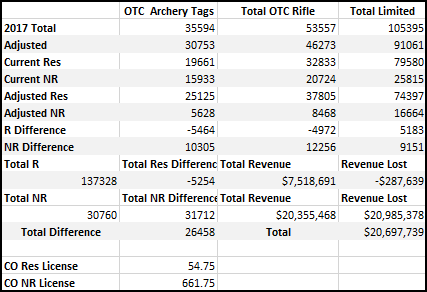TakeABreakAndTouchGrass
Well-known member
- Joined
- Sep 19, 2016
- Messages
- 3,328
- I have heard from a lot of local hunting/gun shop owners in SW CO that many local folks failed to tag out his year. And that non-res had horrible success B/c of major overcrowding in all units.
- I also talked to a local CPW officer that swears they sold ~3X more OTC archery than any other year historically. Rifle down ~20%. This is congruent with the last few years tags sales, but accelerated splits. Scary for us locals and bad for our herds, from the pressure perspective.
I think the good old days are over, unless we do something.
I don't have any experience in CO (yet!). But I think it's been proven on here a few times that hunters will straight up lie through their teeth about finding any success at all, let alone in a general state/unit/species/etc. LOL.







